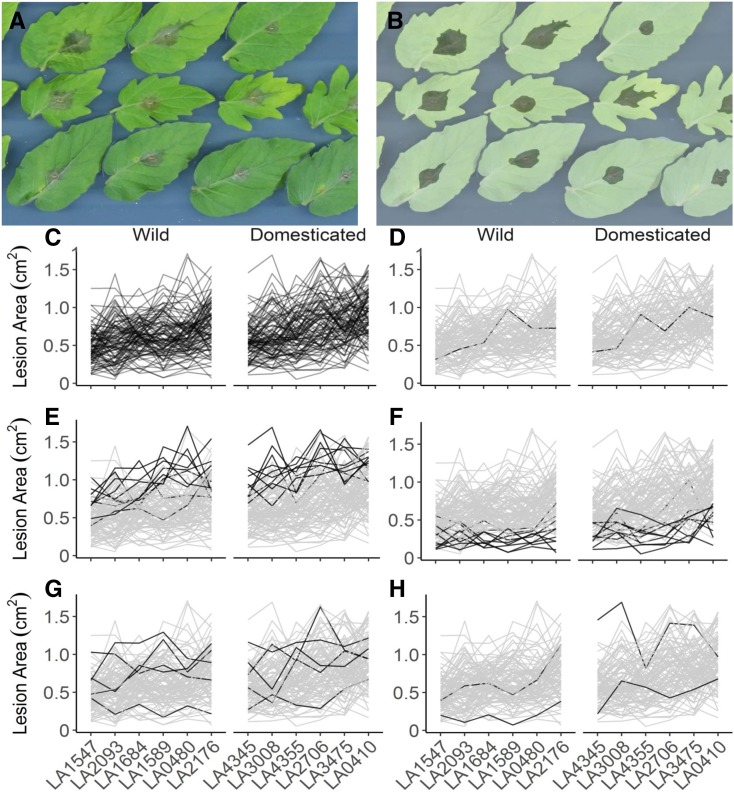Figure 1.
Botrytis cinerea × Tomato Diversity, as Revealed by a Detached Leaf Assay and Digital Image Analysis.
(A) Individual tomato leaflets of 6 S. lycopersicum genotypes and 6 S. pimpinellifolium genotypes are in randomized rows, and spore droplets of individual B. cinerea isolates are in randomized columns. Digital images were collected 72 h after inoculation. Randomized leaflets were infected with single droplets of spore suspensions from 40 randomized B. cinerea isolates, and digital images were taken 72 h after inoculation.
(B) Digital masking of leaves and lesions was followed by automated measurement of the area of each lesion.
(C) to (H) Variation in lesion size resulting from the interaction of B. cinerea and diverse tomato genotypes.
(C) Average lesion sizes of single B. cinerea isolates (line traces) across tomato host genotypes grouped by domestication status.
(D) Highlight of the common reference B. cinerea isolate B05.10.
(E) Highlight of the ten highest-virulence isolates, as estimated based on mean virulence across all tomato genotypes.
(F) Highlight of the ten most saprophytic, or low virulence, isolates, as estimated based on mean virulence across all genotypes.
(G) Highlight of the five isolates collected from tomato tissue.
(H) Highlight of the two isolates with significant domestication sensitivity.

